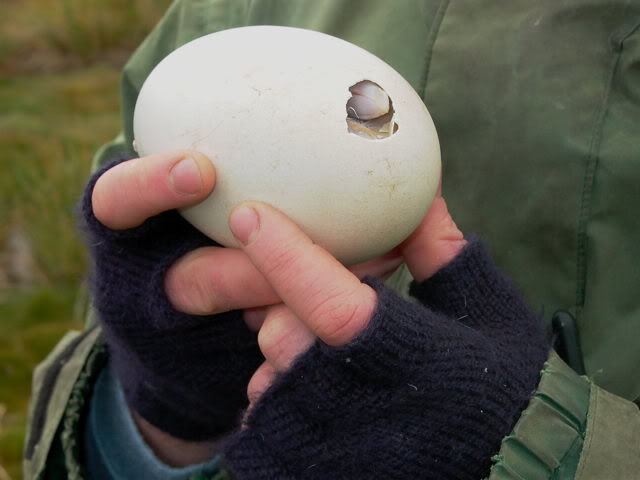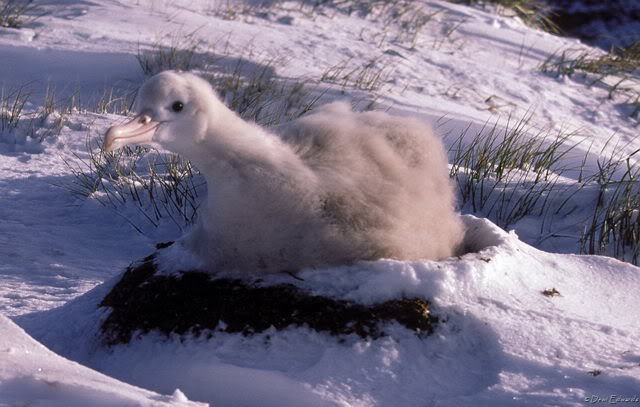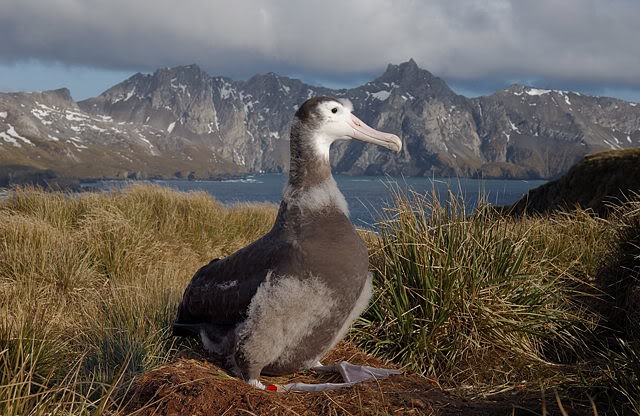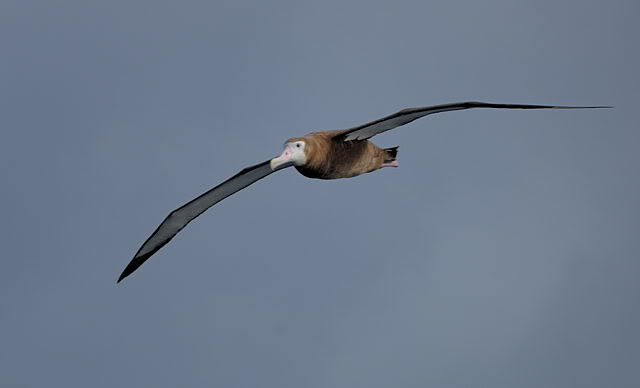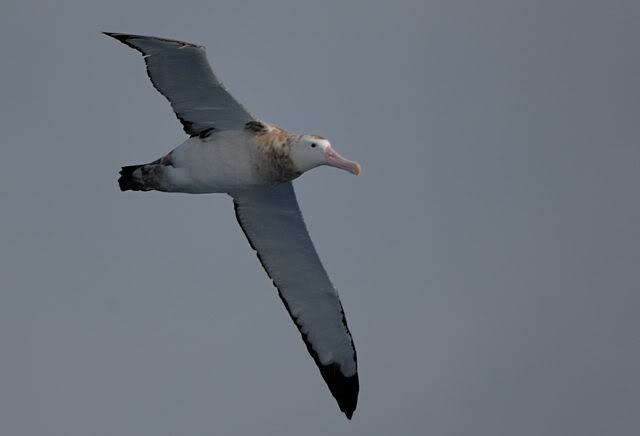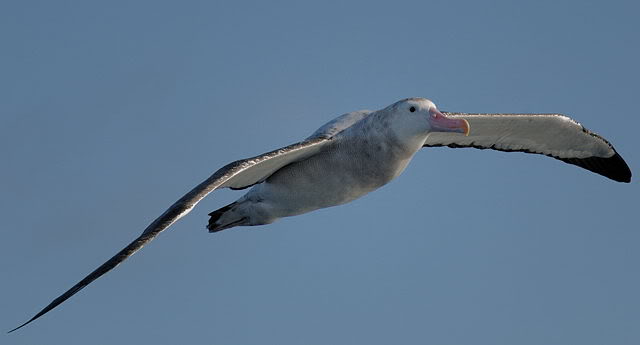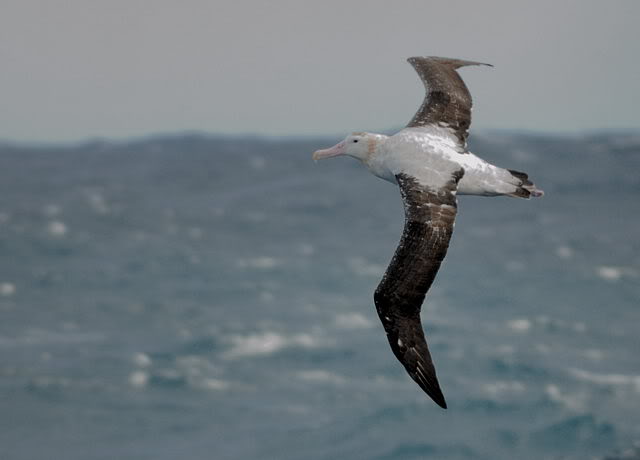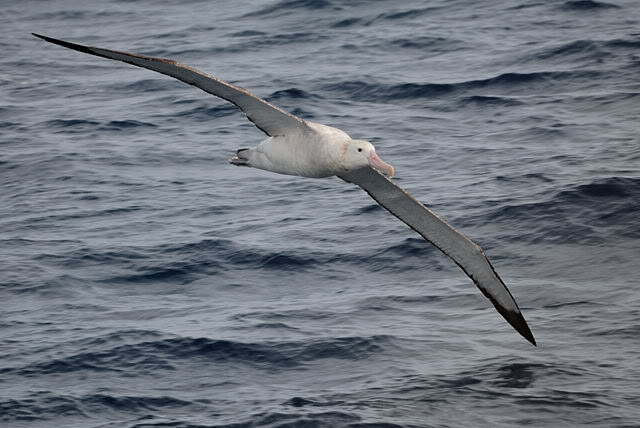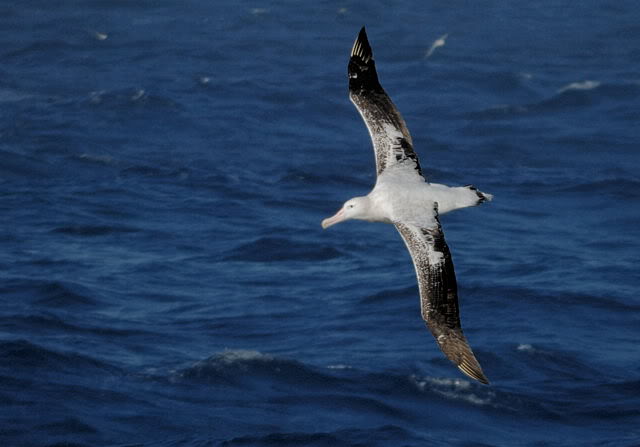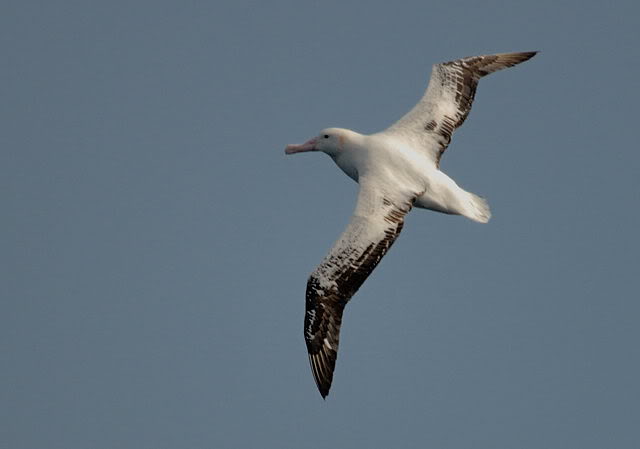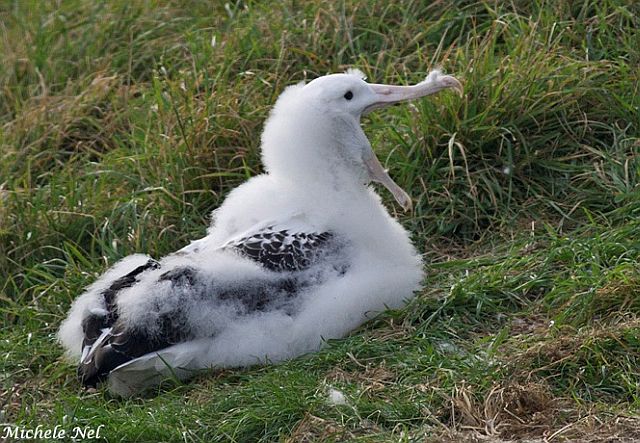Northern Royal Albatross Diomedea sanfordi (Swartvlerkkoningalbatross)
Order: Procellariiformes. Family: Diomedeidae
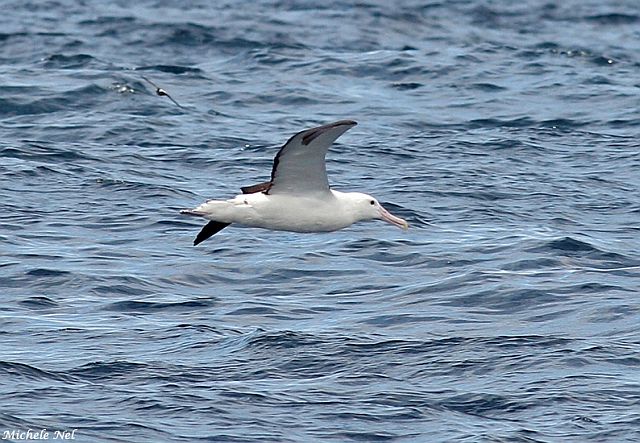 Description
Description
The Northern Royal Albatross is a large seabird from the albatross family. It is typically about 115 cm, weighs 6.2–8.2 kg and has a wingspan from 270–305 cm.
The plumage is white with completely black upperwings, and juveniles have some black flecking on the upperparts. The bill is pale pink with a diagnostic black edge to the upper beak.
The juvenile has a white head, neck, upper mantle, rump, and underparts. There is dark speckling on the crown and rump. Its lower mantle and back are white with more black speckling than the crown, and it has dark black-brown upper wings with white flecks on its covert. Its tail is white with a black-brown tip, as are its underwings. There is a black ban behind the leading edge of its wings between the carpal joint and the tip. As they age, its head, back, rump, tail, and scapular region whiten. All ages have a pink bill with a black cutting edge on the upper mandible, along with flesh colored legs.
Similar species: The Northern Royal Albatross can be distinguished from the
Southern Royal Albatross at sea by its upper wings, the plumage of which are all dark compared to the large areas of white on the Southern.
Taxonomy
The Northern Royal Albatross was split from the closely related Southern Royal Albatross as recently as 1998, though not all scientists support that conclusion and consider both of them to be subspecies of the Royal Albatross.
Distribution and habitat
It breeds on islands off the coast of New Zealand, dispersing in the non-breeding season to the waters surrounding South America. It is generally scarce in southern African waters, while most common over the continental shelf edge between the Orange River, Northern Cape and Cape Agulhas, Western Cape but also rarely occurring further south.
Movements and migrations
It arrives at its breeding colonies in October, breeding before dispersing about a year later across the southern oceans.
Diet
The Northern Royal Albatross feeds on fish, cephalopods, crustaceans, salps, and carrion. Squid is an important part of their diet and can make up 85% of it
Breeding
They will perform a very extensive mutual or group display, sometimes in the air or on the water. Once they form a bond, the displays lose extravagance. Breeding starts at 8 years. They nest biennially, and will build their nests on flat summits of the islands that they frequent. They prefer to be in grass or herbs, and their nest is a low mound of vegetation, mud, and feathers. A single egg is laid, in October or November, in a nest which takes both parents around 80 days to incubate. The chick is brooded for a month, and is ready to fledge after around 240 days. Their colonies are denser than those of any other great albatross
Northern Royal Albatrosses nest on the Chatham Islands, (Forty-fours Island, Big Sister Island, and Little Sister Island), Enderby Island in the Auckland Islands, and at Taiaroa Head on the Otago Peninsula, New Zealand. The Taiaroa Head colony is the only albatross colony of any species found on a human-inhabited mainland. When they are not breeding Northern Royal Albatrosses undertake circumpolar flights in the southern oceans, and in particular like the Humboldt Current and the Patagonian Shelf.
Status
Rare vagrant.
Northern Royal Albatrosses are listed as an endangered species by the IUCN, and they have an occurrence range of 64,300,000 km2, with a breeding range of 8 km2. 6,500 to 7,000 pairs breed on the Chatham Islands annually along with 60 pairs at Taiaroa Head, for an estimated total of 20,000 birds, although this is a 2012 estimate. In 1985 their main breeding grounds on the Chatham Islands have been badly damaged by a series of intense storms and the resulting lack of nesting material has lowered their breeding success. Chicks and eggs of birds breeding on the South Island have also been preyed upon by introduced species, such as cats, bottle flies, and stoats. Finally, longline fishing is the biggest threat to this bird, even though it has been reduced.
To help in the survival of this species, bird banding is underway, Taiaroa Head has predator control in effect during breeding season, as well as the Chatham Islands having no predators. Enderby Island and Taiaroa Head are nature preserves, and the Department of Conservation eradicated feral cattle, rabbits and mice from Enderby Island by 1993.
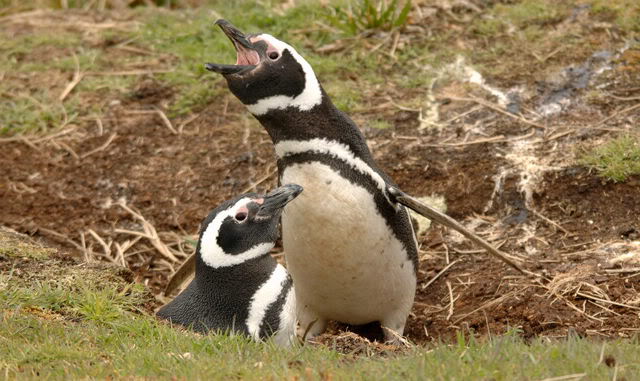



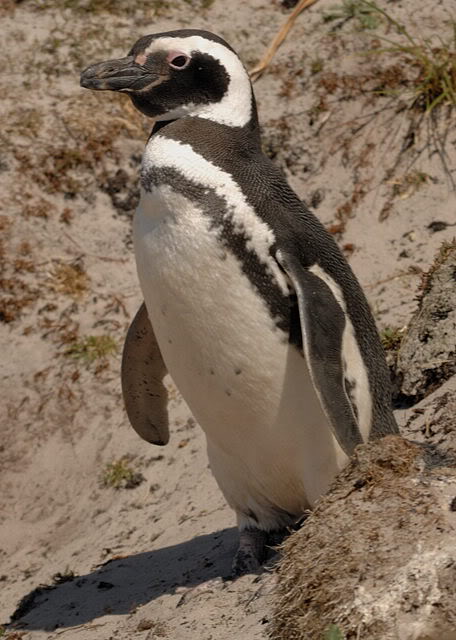
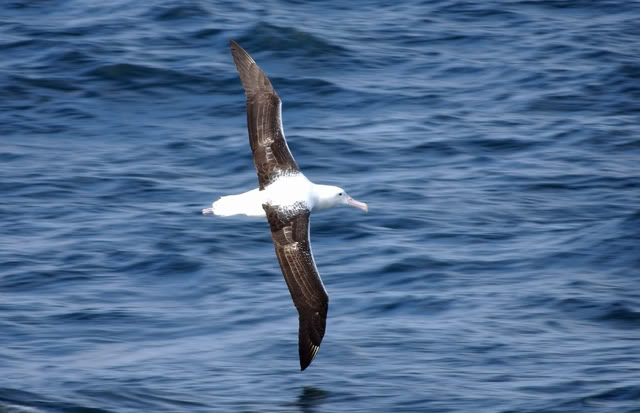
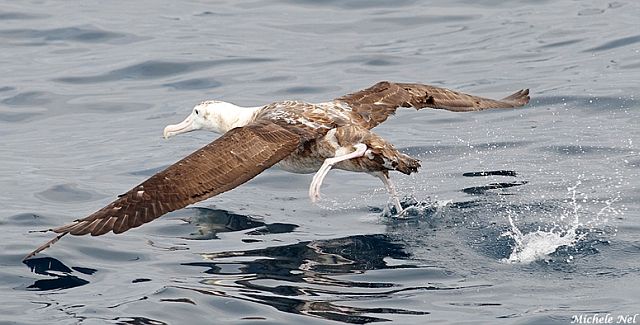 © Michele Nel
© Michele Nel